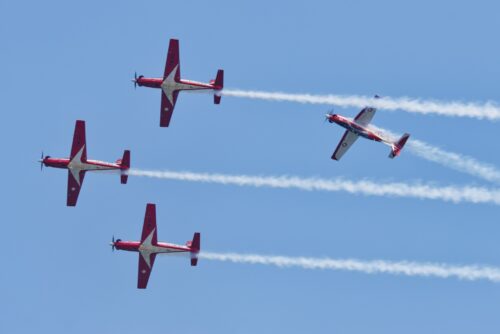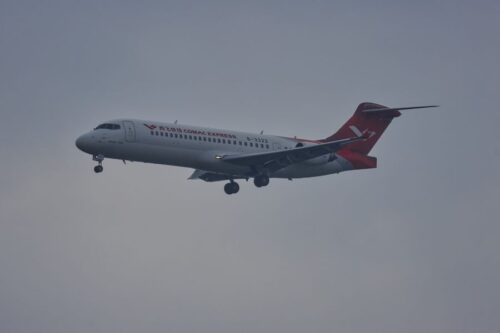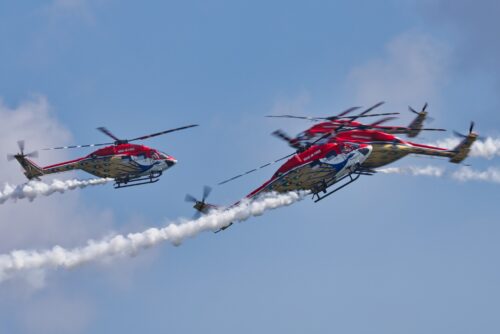Get ready to witness a shift in the skies! This year’s Singapore Airshow promises a thrilling spectacle, but with a distinct twist: Asian-made aircraft take center stage. Gone are the days where Western giants dominated the flying display. Instead, the 2024 edition proudly showcases the innovative spirit and technological prowess of Asian aviation. This isn’t just about showcasing impressive machines; it’s a symbolic moment signifying the rising power and innovation within the region’s aerospace industry.
For years, Asian manufacturers have been quietly making advancements, and now, they’re ready to share their creations with the world. From sleek commercial jets to agile combat aircraft, the flying display promises a diverse line-up, each plane carrying the aspirations and ingenuity of its birthplace.
This change marks a significant shift in the global aerospace landscape. It disrupts the traditional dominance of Western players and paves the way for a more multilateral future. It’s an opportunity to witness first-hand the diverse approaches and solutions Asian manufacturers bring to the table, enriching the industry with fresh perspectives and innovative designs.
As we delve deeper into the Asian-dominated flying display at the Singapore Airshow 2024, two names inevitably steal the spotlight: China’s C919 and ARJ21, marking a pivotal moment in the nation’s aerospace journey.
This year, the airshow witnesses the international debut of the C919, China’s first domestically developed large passenger jet. This isn’t just another aircraft; it’s a symbol of ambition, signifying China’s entry into the lucrative narrow-body market traditionally dominated by Western giants. Prepare to witness its sleek design and powerful yet quiet engines roar skyward, showcasing China’s ability to develop and manufacture complex commercial aircraft on par with international standards.
While the C919 sets its sights on global markets, the ARJ21 represents China’s focus on regional connectivity. This domestically developed regional jet has already seen success in its home market, and the Singapore Airshow provides a platform to showcase its capabilities to a wider audience. Expect to see its versatile design and efficient performance as it takes to the skies, demonstrating China’s potential to become a major player in the regional jet market.

Adding to the diverse display of Asian aviation prowess at the Singapore Airshow 2024 is the Indonesian Jupiter Team, known for their thrilling aerobatic performances with the KT-1 Wong Bee trainer aircraft. The KT-1B, manufactured by Korea Aerospace Industries (KAI), is itself a product of Asian innovation. Its advanced turboprop engine and aerodynamic design allow for agile maneuvers, perfectly suited for the Jupiter Team’s closeup, synchronized displays. This aircraft showcases the growing capabilities of Asian manufacturers, offering competitive alternatives in the trainer and light attack market.
But the performance goes beyond technical prowess. The Jupiter Team is a symbol of Indonesian pride and dedication. Each pilot is an elite instructor, representing the pinnacle of Indonesian airmanship. Their synchronized formations and daring stunts not only entertain the audience, but also demonstrate the country’s commitment to training highly skilled pilots and showcasing its military capabilities on a global stage.
Adding a dash of elegance and agility to the Singapore Airshow 2024 is the renowned Indian Air Force Sarang Team, showcasing their synchronized helicopter aerobatics with the HAL Dhruv. This indigenously-developed helicopter, meaning “unshakeable” in Sanskrit, embodies the team’s unwavering spirit and dedication to aerial artistry.
This indigenously designed and manufactured helicopter, known for its maneuverability and agility, becomes an extension of the pilots’ skill in the hands of the Sarang Team. It also showcases the capabilities of Indian aerospace on the global stage, highlighting the strides made by Hindustan Aeronautics Limited (HAL) in helicopter design and development. The Dhruv itself serves as a symbol of self-reliance, demonstrating India’s ability to produce advanced military hardware domestically.
From the vibrant hues of the Jupiter Team and the graceful maneuvers of the Sarang Team, we now shift our focus to South Korea’s Black Eagles. Renowned for their awe-inspiring aerobatic displays, the Black Eagles have long been a staple of international airshows, captivating audiences with their synchronized formations and daring maneuvers. But this year at the Singapore Airshow 2024, they take to the skies not just with their renowned skill, but also with a symbol of South Korea’s growing aerospace prowess: the KAI T-50 Golden Eagle.
The Black Eagles boast a rich history, dating back to their first official formation in 1951. The team transitioned from the Cessna A-37B Dragonfly jets to the domestically developed KAI T-50 in 2009, marking a significant leap forward in showcasing South Korea’s own technological advancements. Since then, the Black Eagles have performed countless displays around the world, earning international acclaim for their precision and professionalism.
But the KAI T-50 isn’t just a stage for their aerial artistry; it’s a testament to South Korea’s growing ambitions in the global aerospace market. This advanced trainer jet, renowned for its maneuverability and performance, has already found success in international markets. From the skies of Indonesia and Iraq to the air forces of Thailand, the Philippines, and most recently, Malaysia, the KAI T-50 is leaving its mark, solidifying South Korea’s position as a key player in the global jet trainer market and training future fighter pilots for these countries.
When these magnificent Asian-made aircraft take to the Singaporean sky, prepare to witness something deeper. Feel the embodiment of entire nations’ aviation heritage thundering in their engines. See the culmination of years of research, development, and unwavering ambition etched in each sleek fuselage. From South Korea’s Black Eagles soaring with the T-50, a testament to their technological prowess, to the Indian Sarang Team’s graceful maneuvers with the HAL Dhruv, a symbol of self-reliance, each aircraft tells a story. More than just machines, they represent the collective ascent of Asian innovation taking flight. Witness the future of aviation unfold, painted across the Singaporean sky in a vibrant tapestry of Asian ingenuity and ambition.




I remember the infographic showing where all the “hi tech” parts of the Chinese passenger plane were made. Heh.